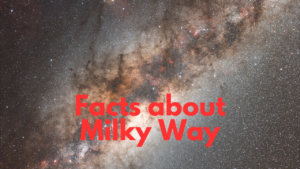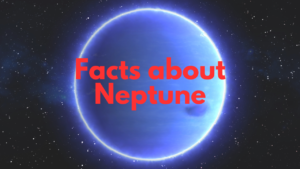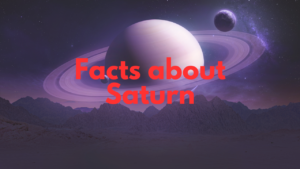
For numerous ages, the Milky Way has perplexed scientists and thinkers worldwide. Today we are going to discuss Amazing Facts about Milky Way.
This galaxy, which includes our planet, solar system, and many billions of stars and planets, is our home.
From the beginning of time, mythology has been connected to the Milky Way, spanning civilizations and nations. Each has its own theory for how this incredible, all-encompassing idea came to be, ranging from cornmeal spills to rivers placed there by avaricious gods.
We’ll look at 15 amazing facts about Milky Way here.
Facts about Milky Way No1:
The Milky Way’s band of light was initially identified by Galileo as individual stars in 1620, but Edwin Hubble, an American astronomer, is credited for discovering the Milky Way’s actual shape and extent as well as the existence of additional galaxies outside of it.
The Milky Way is a barred spiral galaxy that stretches throughout the universe and is around 13.6 billion years old.
Quick facts about Milky Way:
– Type of galaxy: Barred spiral
– Age: 13.6 billion years and still growing
— Dimensions: 100,000 light-years in width
About 200 billion stars are in the universe.
250 million years is the rotation time.
Las Cumbres Observatory estimates that the disk of our home galaxy is only 1000 light-years thick and 100,000 light-years in diameter.
The solar system revolves around the Milky Way’s center, much as Earth does around the sun. Our solar system takes about 250 million years to complete a single rotation, while traveling through space at speeds of about 515,000 mph (828,000 kmph), according to Interesting Engineering. When our world was in this state previously, mammals had not yet evolved and dinosaurs had just begun to appear.
Facts about Milky Way No2:
At a speed of roughly 120 km/s (75 miles per second), the Milky Way and Andromeda, another spiral galaxy, are headed toward one another and will collide in more than 4 billion years.
Facts about Milky Way No3:
There is compelling evidence that a supermassive black hole resides at the Milky Way’s galactic center, or rotational core.
Facts about Milky Way No4:
Because the Milky Way appears as a faint milky band in the sky, its name is derived from the Greek galaxías kýklos, or milky circle.
Facts about Milky Way No5:
According to Cherokee mythology, the Milky Way was created when a dog stole a bag of cornmeal and spilled some while being chased. That’s why the galaxy is called “The Way the Dog Ran Away.”
Facts about Milky Way No6:
When viewed with the unaided eye at night from any location on Earth, the Milky Way appears to consist of roughly 2,500 stars; in reality, there are between 100 and 400 billion stars in the Milky Way.
Facts about Milky Way No7:
Every year, the Milky Way produces about seven new stars and loses seven stars due to supernovae, which are massive explosions that occur at the conclusion of a star’s life cycle and remove nearly all of the star’s material.
Facts about Milky Way No8:
Any image you’ve ever seen of the Milky Way taken from space is either a painting or a picture of another galaxy. Since we are seated inside the cosmos, an aerial perspective is obviously not possible.
Facts about Milky Way No9:
According to estimates, the universe is 13.7 billion years old. Found in globular clusters, the oldest stars in the Milky Way are 13.6 billion years old.
Facts about Milky Way No10:
A central axis drives the galaxy’s rotation. The Sun is thought to have circled its center roughly one-third of the way since 65 million years ago, or the time the dinosaurs became extinct.
Facts about Milky Way No12:
2015 saw the discovery of Keper-186f, a planet circling a dwarf star at a distance of 4.730 trillion km (2,939 trillion miles) on the outside rim of the Milky Way’s habitable zone. It’s possible that Keper-186f can support life.
Facts about Milky Way No13:
Since the Milky Way fits both of these criteria and accounts for two thirds of spiral and two thirds of barred galaxies in the known universe, it is one of the most prevalent galaxy designs.
Facts about Milky Way No14:
The circumference of the Milky Way is roughly 9.5 x 1017 kilometers. The Milky Way would be as large as the United States and the sun would be a tiny dot of dust if our solar system were a quarter of the size of the country.
Facts about Milky Way No15:
The Milky Way is referred to as “the silver river” in China. The river was supposedly positioned by the gods to keep their weaver and the herdsman who loved her separate, according to Chinese mythology.

At a speed of about 827000 kph (514,000 mph), our solar system revolves around the center of the galaxy. At this speed, an object could complete a full rotation of the Earth’s equator in 2 minutes and 54 seconds.
Facts about Milky Way No16: the largest planet within the Milky Way
HD 100546 b, a massive gas giant in the process of formation that has a diameter of around 6.9 times that of Jupiter, or 77 times that of Earth, may be the largest planet known to exist in the Milky Way.
Because some of the material surrounding the planet may be mistaken for actual planet material, the measurement of the planet’s radius is quite unclear. With diameters of almost 2.1 times that of Jupiter, HAT-P-67 b and XO-6b are the biggest planets whose sizes are known with certainty. The sizes of these two planets have been directly measured while they are passing through their parent star.
There is still so much more to discover about our galaxy.
Because of its sheer immensity, visiting the outer edge and experiencing it in all its splendor can only ever remain a distant dream for any of us.
also read: Facts about Nasa
But that doesn’t mean we can’t enjoy the captivating images on exhibit, the speed at which everything in the cosmos moves, and the vast amount of undiscovered knowledge that remains.
The power of space may one day lead to the discovery of another Earth, a more habitable counterpart of Keper-186f, or another spectacular cosmic event.
It consumes every individual, thing, and idea in the galaxy.
I believe that this situation nicely captures what Richard Feynman once stated about quantum mechanics: “If you think you understand the Milky Way, you don’t understand the Milky Way.”





